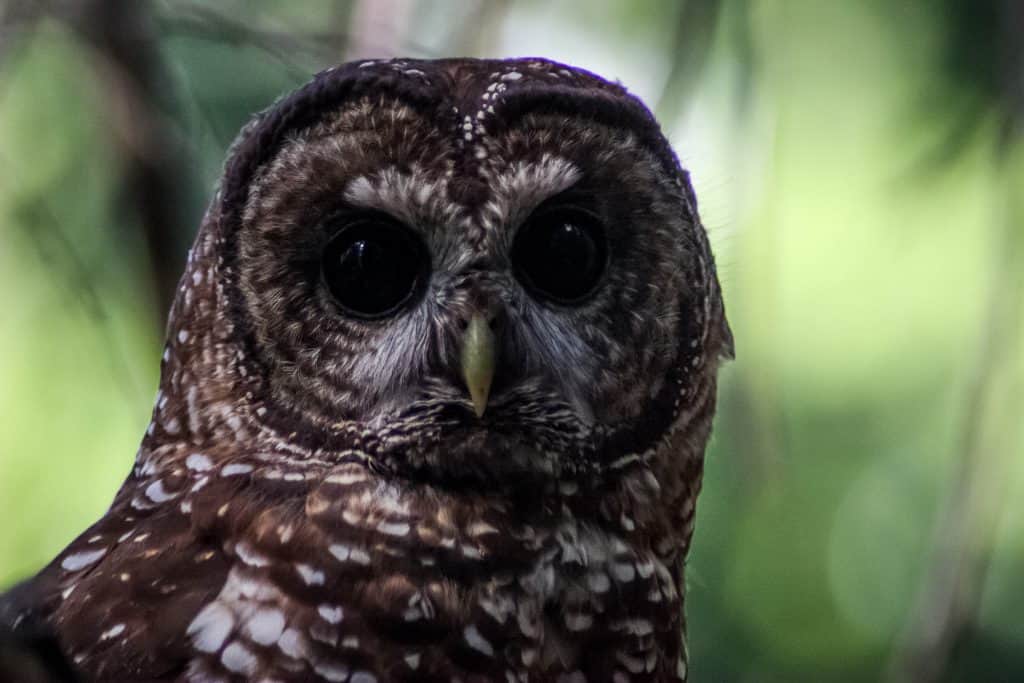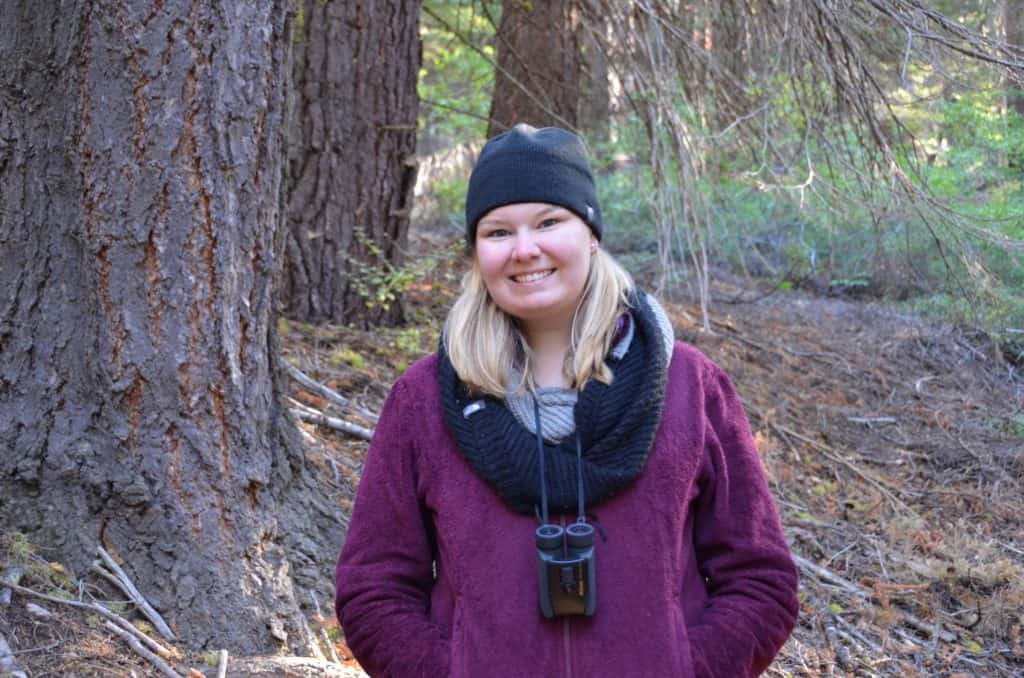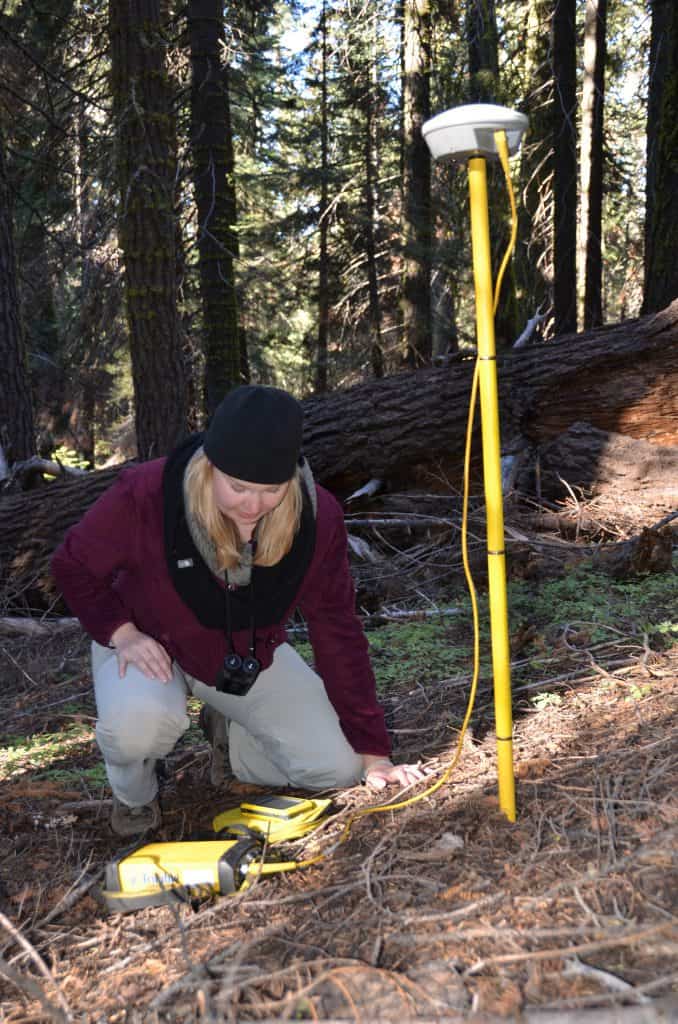Share this article
Site visit insights: Spotted owl has specific habitat needs
Site visits are critical to helping scientists learn more about species and their habitats. The trips often take them into areas most people do not have a chance to explore, including public and privately-owned restricted sites, as well as some remote and hard-to-reach areas. “Site visit Insights” provides a behind-the-scenes perspective of wildlife biology, featuring photographs, and interesting discoveries and happenings biologists experience in the field.
In cooperation with the U.S. Fish and Wildlife Service, The Wildlife Society is pleased to share these insights.
Wildlife Biologist: Madeline Drake, wildlife biologist
Site visit location: California’s Eldorado National Forest; Plumas National Forest; and Yosemite National Park
What was the purpose of the site visit?
The purpose of my site visits was to meet conservation partners and observe California spotted owl habitat in the Sierra Nevada Mountains. I went to three different sites to see a variety of habitat types and learn about the research and management actions that are taking place for the conservation of the owl. The knowledge I gained and contacts I made during this trip will be helpful for developing a California spotted owl species status assessment.
Where did you go?
I went to three different locations in order to observe a variety of different habitat types in California: Eldorado National Forest, Eldorado County; Yosemite National Park, Mariposa County; Plumas National Forest, Plumas County.
What partners were you working with and what is the nature of SFWO’s partnership with them?
At Eldorado National Forest, I met with two University of Wisconsin-Madison research associates. Eldorado National Forest is part of a larger, long-term California spotted owl demography and conservation project in the Sierra Nevada Mountains. The researchers discussed with me the methods used for the demography study and showed me a variety of different territories that are being monitored. Some territories were occupied and were considered to have optimal habitat qualities, while others were territories that were once occupied but for one reason or another no longer had any owls.
At Yosemite National Park, I went out with a park service biologist to map nesting trees from the summer breeding season. The nest tree data will be used to better understand the habitat qualities of nesting owl territories. We also observed a territory that was once occupied by California spotted owls, but has since been taken over by a barred owl.
Finally at Plumas National Forest, I met with three U.S. Forest Service biologists and observed known owl territories that are monitored by the forest. They shared with me the management actions and protections that are in place by the forest for the conservation of the owl, and showed me sites where they have used prescribed fire to restore natural forest dynamics of low severity fire for the benefit of California spotted owls.
What did you learn from this site visit that you didn’t know before?
I was fortunate to have great hosts at all three sites where I learned a lot of new information about the habitat, research, and management strategies for the California spotted owl. Perhaps the most important thing I took away from the visits was the important habitat qualities that make owl territory optimal. Medium-large trees, high canopy cover, and a complex under-story structure of the forest were all consistent qualities in the territories that continued to be occupied by owls and produced young consistently. Getting to see a range of those qualities, and how they are laid out on the landscape really helped my understanding of the species’ needs.
What surprises did you encounter during the site visit?
During my visits I got to see two owls! Owls are a nocturnal species, and my visits took place during the day, so I was not expecting to see any owls. The researchers I was with on Eldorado National Forest were able to find an older male owl roosting in an area where it is commonly found. On Plumas National Forest, we were able to track down an owl that had been tagged with a GPS tracking for a foraging study. It was my first time getting to see a spotted owl, and I was amazed by its beauty!
For more information about California spotted owl conservation visit, see the California Spotted Owl Conservation Objectives Report.

California spotted owl is found throughout the forests of the western Sierra Nevada Mountains, from Shasta County south to the Tehachapi Pass. ©Tim Demers

Sacramento Fish and Wildlife Office Biologist Madeline Drake visits public lands to learn about California spotted owl habitat types. ©Veronica Davison/USFWS

California spotted owls generally inhabit older forests that contain areas of high canopy cover, with a multi-layered canopy, old decadent trees, a high number of large trees and coarse downed woody debris. ©Veronica Davison/USFWS
The U.S. Fish & Wildlife Service is a Strategic Partner of The Wildlife Society.
Header Image: ©Laura Blanchard








